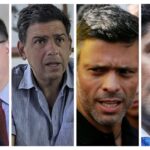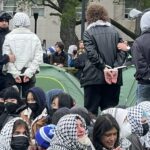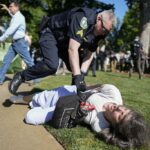The current road map (January 2019) for the overthrow of Venezuelan President Nicolás Maduro and the liquidation of the Bolivarian Revolution is similar, almost to the calcu, to the one designed and followed by the US and the EU in Libya in 2011. These are the elements that demonstrate it.
1) The US government through a statement by its Secretary of State, Mike Pompeo praised the decision of the National Assembly (AN), taken just 48 hours before, to create an asset recovery fund product of corruption, whose real objective is to block the Venezuela’s financial resources abroad.
In the case of Libya, the blockade of accounts was carried out between the end of February and the beginning of March 2011 by the countries of the European Union and the United States, at the beginning of the conflict that led to civil war.
2) As in the case of Libya, the objective was not only the overthrow of Gaddafi as head of State and Government, but also to guarantee the end of the institutional model established with the Green Revolution. That is why one of the first actions of the Libyan opposition block was the creation of a National Transitional Council to lead the dismantling of the institutionality.
It is exactly the same as what is intended to be done in Venezuela with the so-called Transition Law that was presented for approval in AN, and that creates a structure with the same name used in Libya: National Council for Democratic Transition.
Note that there seems to be no hurry to “take possession” of the Presidency (and follow the route of calling elections) but the purpose is to consolidate a new institutionality or in any case destroy the existing one.
3) As with Gaddafi, one of the main objectives was his alleged capture to be presented before the International Criminal Court (ICC). For this it was necessary to make him lose his presidential investiture that guaranteed his immunity and turn him into a fugitive from international criminal justice. That is precisely the end of the declaration of illegitimacy and the non-recognition of Maduro’s inauguration.
4) To close a scenario like the one in Libya in February 2011, only one element is needed to trigger a violent confrontation. There were the protests on February 15 and 16, 2011 that broke out in Benghazi (second city of the country) after the false news of a fire in a prison in the capital, Tripoli. Here it could be something as unpredictable as the outcome of a street demonstration for lack of services (gas or electricity), some clash between street vendors and consumers or more complex but predictable situations with communities with ethnic and local characteristics where illegal or sublegal activities are carried out, extraction of minerals, smuggling of fuels and trafficking of food or natural resources. All these illegal trade structures have actors that exercise violence and could serve as nucleus of “militias” for an indirect military intervention that would use the concept of “no-fly areas” and that would aim to divide the national territory.
5) In the case of Libya it is relevant to compare the discursive lines that justified the embargo of the Nation’s accounts with the allegation that they were controlled by Gaddafi and his relatives. In the case of Venezuela, these have been the arguments unofficially offered by the Bank of England not to return the gold of the Republic that is in its custody: they say that Maduro can seize such wealth in an early not recognizing of his character of President of Venezuela
6) These data are complemented by at least two other elements that emerged in the last hours and that are confirmatory signs of the use of the “Libya scenario”. One, the statement of a supposed group of creditors (bondholders) that would have recognized the AN as its only counterpart in a renegotiation of the debt, and Two, the exposition of the economist Francisco Rodriguez (Torunos Capital’s executive) through his account on Twitter, of the criterion, in the British and American jurisprudence, that only the governments recognized by the foreign policy of the UK and the USA can act in the courts of those countries. The latter would imply that assets such as * Citgo * could pass under control of that hypothetical government derived from the Transitional Council.
@latablablog
Translated by JRE/AR
- orinocotribunehttps://orinocotribune.com/author/orinocotribune/
- orinocotribunehttps://orinocotribune.com/author/orinocotribune/
- orinocotribunehttps://orinocotribune.com/author/orinocotribune/April 28, 2024
- orinocotribunehttps://orinocotribune.com/author/orinocotribune/April 28, 2024
Share this:
- Click to share on Twitter (Opens in new window)
- Click to share on Facebook (Opens in new window)
- Click to share on LinkedIn (Opens in new window)
- Click to share on WhatsApp (Opens in new window)
- Click to share on Reddit (Opens in new window)
- Click to share on Telegram (Opens in new window)
- Click to email a link to a friend (Opens in new window)





